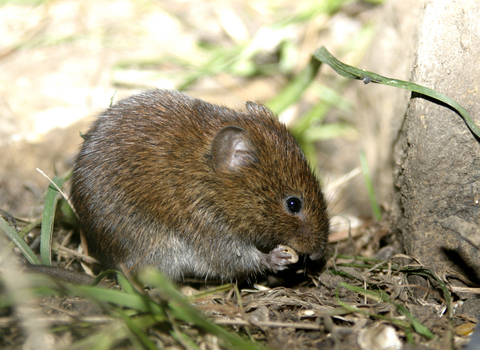
Bank vole ©Wildstock
Bank vole
The chestnut-brown bank vole is our smallest vole and can be found in hedgerows, woodlands, parks and gardens. It is ideal prey for owls, weasels and kestrels.
Scientific name
Myodes glareolusWhen to see
January to DecemberSpecies information
Category
Statistics
Length: 8-12cmTail: 4-6cm
Weight: 15-40g
Average lifespan: 0.5-1.5 years
Common.
